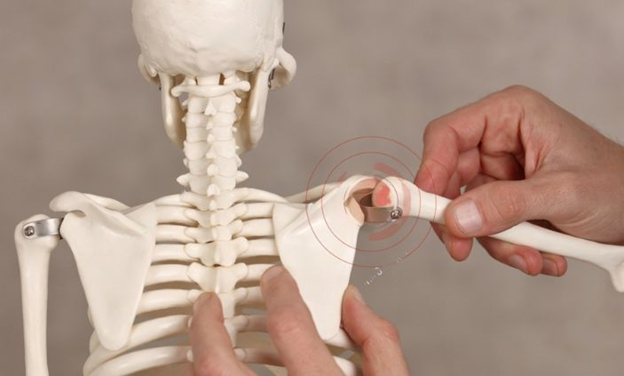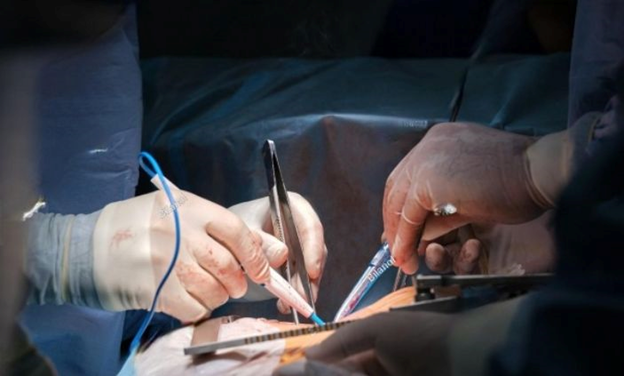Dr. rahul khanna
M.S. (ORTHO), FIASM, FIA
Specialist Joint Replacement, Arthroscopy & Sports Injury
Menu
Dr. rahul khanna
M.S. (ORTHO), FIASM, FIA
Specialist Joint Replacement, Arthroscopy & Sports Injury
Menu
Shoulder Replacement: Surgery & Recovery
The enjoyment of life and one’s capacity to carry out everyday tasks can both be significantly hampered by shoulder pain. Shoulder replacement surgery becomes a ray of hope for those with chronic shoulder pain who are not responding to conservative measures. In this article, we dive into the subtleties of shoulder replacement, illuminating the indications, the surgical procedure, and its potentially life-changing effects.

Understanding the Need for Replacement Shoulders
Osteoarthritis, rheumatoid arthritis, severe injuries, and other disorders that cause chronic discomfort and loss of function frequently lead to the decision to have shoulder replacement surgery. Shoulder replacement becomes a feasible option for people who, despite conservative therapy, are experiencing acute discomfort, stiffness, and limited range of motion to regain comfort and mobility.
Causes of Shoulder Replacement Indications
Osteoarthritis
Pain and restricted movement may result from the slow degeneration of the shoulder joint’s cartilage.
Rheumatoid Arthritis
Shoulder joint degeneration from inflammatory arthritis can result in discomfort and disability.
Post-Traumatic Arthritis
Over time, arthritis may develop in those with a history of serious shoulder injuries or fractures, requiring surgery.
Rotator Cuff Tears
Shoulder replacement may be beneficial if extensive rotator cuff tears cannot be adequately managed with conservative measures.

The Surgical Process
Preoperative Assessment
Before starting their surgical journey, patients go through an extensive preoperative assessment. To determine whether a shoulder replacement is the best course of action entails reviewing the patient’s medical history, getting imaging studies done, and having discussions with the orthopedic surgeon.
Anesthesia and Incision
To guarantee a pain-free procedure, patients are given anesthetic on the day of the procedure. The shoulder joint can be accessed by the shoulder specialist using a small cut. Removal of damaged Tissues: The bone and cartilage that have been destroyed in shoulder joint arthritis situations are carefully removed.
Implant Placement
The injured parts are swapped out for prosthetic implants that are made to resemble the structure and functionality of the native shoulder joint by the surgeon.
Closure and Recovery
Following the implantation of the implants, the incision is closed, and the patient starts the process of recovering from the procedure, which frequently includes physical therapy and rehabilitation.

Getting Around the Recovery Process
A well-structured rehabilitation program is essential for maximizing recovery and achieving the optimum results following surgery. To restore shoulder strength, flexibility, and general function, physical therapy is essential. To progressively restore the range of motion and strengthen the muscles surrounding the replacement joint, patients are led through a series of exercises.
Patients in Unique Situations
Managing shoulder replacement surgery requires a careful assessment of each patient’s unique situation, working with skilled shoulder specialists, and committing to the healing period surgery. Shoulder replacement surgery can be a life-changing option for individuals dealing with ongoing shoulder pain, promising improved mobility and a life free from the limitations of joint discomfort. People can confidently start along the route to a pain-free and active future by being aware of the signs, the surgical procedure, and the possibility of recovery. See an orthopedic expert if your life is being negatively impacted by shoulder discomfort to learn more about the potential for shoulder replacement and to take back control of your health.”Dr. Rahul Khanna can help you get rid of shoulder aches. For individualized help, schedule your session right now. Your path to comfort starts right now!”
Emergency?
24 Hour Ready
Call Us for Emergency
+91-9828501360
Book an Appointment
Seamless Fitness Care Access: Booking an Appointment with Your
Trusted Doctor